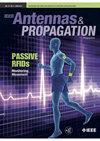电荷守恒、无条件稳定的电磁有限元粒子内单元代码基准测试:验证三维非线性多物理场仿真
IF 5.7
4区 计算机科学
Q2 ENGINEERING, ELECTRICAL & ELECTRONIC
引用次数: 0
摘要
在很大程度上,粒子池(PIC)方法已经成为理解等离子体物理的默认手段。因此,有大量的代码,无论是公开的还是其他的,都被大量使用。这些代码大多分为两类:1)它们主要处理静电问题或2)是1D/2D。因此,缺乏可用于验证用于分析3D问题的代码和方法的基准测试。当设计方法试图打破传统的分析方法时尤其如此,比如使用非结构化网格或隐式时间步进方案。本次审查旨在解决这一需求。我们提出了一些结果,人们可以用来验证和基准三维电磁有限元方法PIC (EM-FEMPIC)代码,用于无碰撞等离子体和光束动力学系统。详细介绍了三种测试案例,包括静态空间电荷膨胀引起的光束膨胀、射频加速结构对相对论束的加速以及粒子推力的精度和能量守恒基准。给出的结果与分析数据或其他代码的结果进行了比较。本文章由计算机程序翻译,如有差异,请以英文原文为准。
Benchmarking-Charge-Conserving, Unconditionally Stable, Electromagnetic Finite-Element Particle-in-Cell Codes: Validating 3D nonlinear multiphysics simulations
To a large extent, particle-in-cell (PIC) methods have become the default means of understanding plasma physics. As a result, there are a spate of codes, public and otherwise, that are heavily used. Most of these codes fall under two categories: 1) they largely deal with electrostatic problems or 2) are 1D/2D. As a result, there is a paucity of benchmarking tests that can be used to validate codes and methods that are used to analyze 3D problems. This is especially true when designing methods that seek to break conventional analysis methods, like using unstructured meshes or implicit time-stepping schemes. This review seeks to address this need. We present a number of results that one can use to validate and benchmark 3D electromagnetic finite-element method PIC (EM-FEMPIC) codes for collisionless plasma and beam dynamics systems. Three test cases are presented in significant detail, including beam expansion due to static space-charge expansion, the acceleration of a relativistic bunch by an radio-frequency (RF)-accelerating structure, and benchmarks of accuracy and energy conservation of the particle push. The presented results are compared against either analytical data or those from other codes.
求助全文
通过发布文献求助,成功后即可免费获取论文全文。
去求助
来源期刊

IEEE Antennas and Propagation Magazine
工程技术-工程:电子与电气
CiteScore
7.00
自引率
5.70%
发文量
186
审稿时长
3 months
期刊介绍:
IEEE Antennas and Propagation Magazine actively solicits feature articles that describe engineering activities taking place in industry, government, and universities. All feature articles are subject to peer review. Emphasis is placed on providing the reader with a general understanding of either a particular subject or of the technical challenges being addressed by various organizations, as well as their capabilities to cope with these challenges. Articles presenting new results, review, tutorial, and historical articles are welcome, as are articles describing examples of good engineering. The technical field of interest of the Magazine is the same as the IEEE Antennas and Propagation Society, and includes the following: antennas, including analysis, design, development, measurement, and testing; radiation, propagation, and the interaction of electromagnetic waves with discrete and continuous media; and applications and systems pertinent to antennas, propagation, and sensing, such as applied optics, millimeter- and sub-millimeter-wave techniques, antenna signal processing and control, radio astronomy, and propagation and radiation aspects of terrestrial and space-based communication, including wireless, mobile, satellite, and telecommunications.
 求助内容:
求助内容: 应助结果提醒方式:
应助结果提醒方式:


